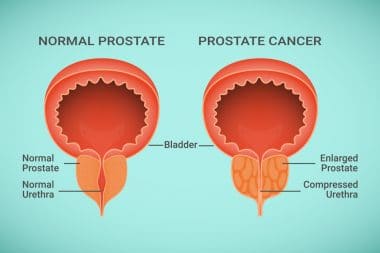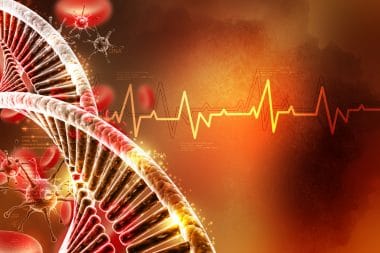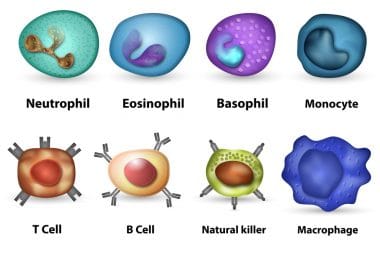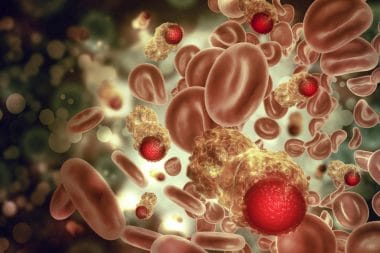The prostate gland goes through two main stages of growth during a man’s life. The first sees fairly rapid growth during the early years of puberty with the prostate roughly doubling in size. The second stage of growth starts in a man’s mid-twenties and this is a much slower phase of growth which then continues throughout life.

The prostate sits just below the bladder and partially surrounds the urethra — the tube which carries urine from the bladder. As the prostate gland grows, the tissue surrounding it restricts its expansion and causes the prostate to close around the urethra, thus restricting the flow through the urethra. At the same time, the bladder wall thickens and the bladder starts contracting even when it contains relatively small amounts of urine. In the end, the bladder weakens and loses its ability to contract and thus to empty itself, so that urine remains trapped in the bladder.
The precise symptoms experienced as a result of an enlarged prostate will clearly vary from person to person but, as a general rule, the first signs will be a change in your pattern of urination or a difficulty in urinating.
You may find, for example, that you start to experience a weak flow of urine or that the flow appears hesitant, tending to stop and start. You may also find that you are unable to hold on and calls to the bathroom become urgent. Trips to the bathroom may also become more frequent, especially during the night, and you may also notice a tendency to leak or dribble urine.
In some cases you may be completely unaware of any problem until you suddenly find that you cannot urinate at all. In this case, referred to as acute urinary retention, the underlying problem is often triggered by common medicines which contain a decongestant and which are used in cold and allergy treatments. Acute urinary retention can also be brought on by alcohol, cold or a long period of immobility.
In the majority of cases these symptoms result simply from an enlarged prostate and this will be confirmed by a visit to your doctor who can often treat the condition fairly easily. It is, however, important that you do indeed visit your doctor if you experience any of these symptoms as, in a small number of cases, they may be indicative or a more serious underlying problem, such as prostate cancer.
A visit to the doctor is also essential as, although many cases of BPH may be treated quite easily, the condition can lead to an infection of the urinary tract, damage to the bladder and/or kidneys, stones in the bladder and incontinence.
An early visit to the doctor can have the problems associated with an enlarged prostate cleared up quickly and considerably reduce the risk of developing complications.







